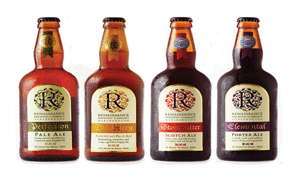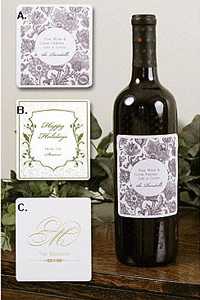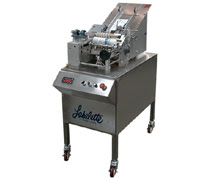
There shall be stated on the label of distilled spirits the phrase "Bottled by", "packed by", or "Filled by" immediately followed by the name (or trade name) of the bottler and the place where such spirits are bottled. If the bottler is the actual bona fide operator of more than one distilled spirits plant engaged in bottling operations, there may, in addition, be stated immediately following the name (or trade name) of such bottler the addresses of such other plants. However:
(a) Where distilled spirits are bottled by or for the distiller thereof, there may be stated, in lieu of the phrase "Bottled by", "Packed by", or "Filled by", followed by the bottler's name (or trade name) and address, the phrase "Distilled by", followed by the name (or trade name) under which the particular spirits were distilled, or any trade name shown on the distiller's permit (covering the premises where the particular spirits were distilled), and the address (or addresses) of the distiller;
(b) Where "straight whiskies" of the same type which have been produced in the same State by two or more different distillers are combined (either at time of bottling or at a warehouseman's bonded premises for further storage) and subsequently bottled and labeled as "straight whisky," such "straight whisky" shall be labeled in accordance with the requirements of the first paragraph of this section. Where such "straight whisky" is bottled by or for the distillers thereof, there may be stated on the label, in lieu of the requirements of the first paragraph of this section, the phrase "distilled by," followed by the names (or trade names) of the different distillers who distilled a portion of the "straight whisky," the addresses of the distilleries where the "straight whisky" was distilled, and the percentage of "straight whisky" distilled by each distiller (with a tolerance of plus or minus 2 percent). In the case where "straight whisky" is made up of a mixture of "straight whiskies" of the same type from two or more different distilleries of the same proprietor located within the same State, and where the "straight whisky" is bottled by or for the proprietor thereof, such "straight whisky" may be labeled, in lieu of the requirements of the first paragraph of this section, with the phrase "distilled by" followed by the name (or trade name) of the proprietor and the addresses of the different distilleries which distilled a portion of the "straight whisky."
(c) Where distilled spirits are bottled by or for the proprietor of a distilled spirits plant, there may be stated, in lieu of the phrase "Bottled by", "Packed by", or "Filled by", followed by the bottler's name (or trade name) and address, the phrase "Blended by", "Made by", "Prepared by", "Manufactured by", or "Produced by" (whichever may be appropriate to the process involved), followed by the name (or trade name) and the address (or addresses) of the distilled spirits plant proprietor;
(d) On labels of distilled spirits bottled for a retailer or other person who is not the actual distilled spirits plant proprietor of such distilled spirits, there may also be stated the name and address of such retailer or other person, immediately preceded by the words "Bottled for", or "Distributed by", or other similar statement; and
(e) The label may state the address of the proprietor's principal place of business in lieu of the place where the bottling, distilling or processing operation occurred, if the address where the operation occurred is indicated by printing, coding, or other markings, on the label or on the bottle. The coding system employed will permit an appropriate TTB officer to determine where the operation stated on the label occurred. Prior to using a coding system, the distilled spirits plant proprietor shall send a notice explaining the coding system to the appropriate TTB officer .

















































